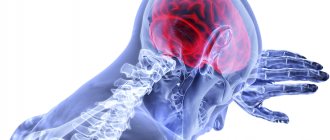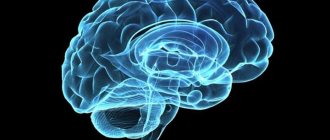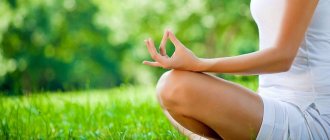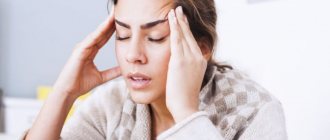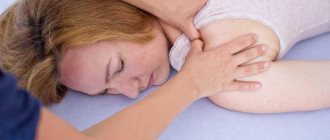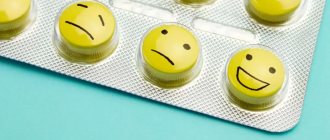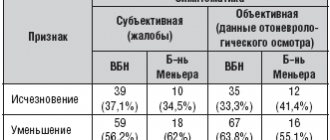Dry extract of St. John's wort in capsules - a natural sedative
St. John's wort is a perennial herb that is quite popular in Asia and Europe.
Our ancestors often used it to prepare healing mixtures. The herb was collected in the summer, dried and added to decoctions as needed. Today it is much easier to buy St. John's wort extract in an easy-to-use form - in capsules that do not require tea leaves or other preparation. St. John's wort capsules can be taken anywhere; they make it easier for people who work or lead an active lifestyle to stick to a dosage schedule.
St. John's wort extract: composition
The capsules consist of 100% water-soluble dry extract of St. John's wort (herb). St. John's wort extract contains the following active components:
- Flavonoids (hyperin, hypericin, rutin, hyperoside, quercitrin, leukoanthocyanins, myricetin). They have antioxidant and anti-inflammatory effects ;
- Saponins. They have diuretic, adaptogenic, sedative, and mild laxative properties;
- Essential oil. An effective antiseptic. Destroys microbes, viruses, protects the human body from adverse external factors ;
- Resins. The substance has antiseptic, wound healing and antioxidant effects;
- Ascorbic acid. Strong immunomodulator, anti-inflammatory agent ;
- Carotene. A vitamin that triggers cell regeneration and is responsible for good vision .
Allowed drugs after a long binge
Considering that at the time of sedative therapy there may still be residual alcohol in the human body, in order to avoid complications it is necessary to use medications that are compatible with ethyl alcohol. Among them:
- Valerian. Plant composition. Shows pronounced sedative properties. Facilitates the onset of sleep.
- Glycine. Metabolic. Regulates metabolic processes. Normalizes and activates protective inhibition reactions in the nervous system, reduces psycho-emotional stress. At the same time, it increases intellectual performance.
- Picamilon. The composition includes N-nicotinoyl-gamma-aminobutyric acid sodium salt. This is a proven nootropic compound. Provides dilation of cerebral blood vessels. Acts as an antiplatelet agent, antioxidant, tranquilizer, and psychostimulant. The medicine stabilizes brain activity, increases performance, relieves stress, anxiety, and fear. Reduces the severity of headaches.
- Mexidol. A medicine that increases the body's resistance to stress factors. Nootropic, anticonvulsant, antihypoxic. Reduces the manifestations of intoxication, helps to quickly recover from binge drinking.
- Novo-Passit. Herbal tablets based on lemon balm, valerian, St. John's wort, passionflower, elderberry. Relieves irritability, treats headaches caused by nervous tension, and improves sleep.
- Grandaxin. A drug from the group of benzodiazepine derivatives. Has an anxiolytic effect. A safe psycho-vegetative regulator that eliminates various forms of autonomic disorders. Moderately stimulates the central nervous system. Doctors prescribe it for depression, neurosis, and alcohol withdrawal.
pharmachologic effect
St. John's wort has the following beneficial effects on the human body:
- Sedative, anxiolytic, antidepressant . St. John's wort contains large amounts of B vitamins, which are known for their sedative properties. St. John's wort extract has a calming effect on the nervous system, helps overcome severe stress, depression, and mental overload;
- Antioxidant . The product contains flavonoids in large quantities, which prevent oxidative processes, block free radicals, thereby prolonging the youth of the body;
- St. John's wort extract in tablets has a diuretic and choleretic effect . St. John's wort extract capsules help remove excess fluid and stimulate the flow of bile from the liver;
- St. John's wort has anthelmintic and anthelmintic effects . The herb St. John's wort helps fight intestinal parasites;
- Expectorant . St. John's wort extract helps liquefy and remove mucus from the respiratory tract (bronchial tubes, lungs);
- Tonic . St. John's wort naturally increases physical and mental performance, also normalizes sleep and improves mood;
- Antispasmodic, analgesic . St. John's wort effectively relieves spasms of smooth muscles of the gastrointestinal tract, eliminates intestinal colic;
- Anti-inflammatory, antimicrobial . St. John's wort extract is recommended for the treatment of microbial infections of various localizations. The active components of the herbal remedy destroy pathogenic microorganisms and inhibit the proliferation of bacteria;
- Astringent, regenerative . The herb St. John's wort has the ability to enhance tissue regeneration, so it will be useful for various damage to the skin: wounds, burns, erosive processes. Thanks to the astringent properties of St. John's wort, the herbal remedy effectively restores the structure of the mucous membranes of the inner walls of the intestines.
Lack of sleep and irritability due to days of heavy drinking
The need to use sedatives after binge drinking is caused by the cessation of alcohol intake into the body. The human body reacts very sharply to the changes that have occurred.
Ethanol affects the central nervous system and causes changes in the functioning of neurotransmitters. After its use, the production of dopamine and serotonin increases and the level of gamma-aminobutyric acid decreases. When binge drinking, the sensitivity of dopamine and serotonin receptors is always significantly reduced.
As soon as a person gives up drinking, there is an acute lack of serotonin and dopamine. Even if their concentration is within normal limits, the body cannot perceive them normally. Then the alcohol addict becomes very sad and depressed, and slowly reacts to irritating factors.
In parallel, in acute alcohol poisoning, the activity of the sympathetic nervous system increases. This is necessary so that detoxification reactions take less time. Due to such changes, all body systems seem to be overexcited. This is why there is a need to take sedatives after an alcoholic binge.
Indications for use of St. John's wort extract
St. John's wort extract in capsules is recommended for:
- Prevention and diseases of the gastrointestinal tract (gastritis, peptic ulcer of the stomach and duodenum, diarrhea);
- For problems with the liver, kidneys, urinary and gall bladder (urolithiasis and cholelithiasis, cystitis, hepatitis);
- Psychovegetative disorders (depressed mood, apathy), neurotic reactions;
- Depressive states of moderate and mild severity. Depression is a loss of interest in usual activities or a lack of pleasure in activities that previously caused positive emotions for a long period (2 weeks or more). St. John's wort extract in capsules has a mild antidepressant effect, so it can be successfully used in the initial stages of the disease;
- OCD (obsessive-compulsive disorder). This is a type of disorder that appears as a result of too strong psycho-emotional stress and is expressed in repeated compulsive actions. This disease is difficult to treat, but in the initial stages St. John's wort extract is successfully used for correction;
- Premenstrual syndrome, menopause. PMS is characterized by many symptoms, the most commonly mentioned being rash, bloating, swelling, breast tenderness, irritability, pain, and depression. St. John's wort herb normalizes hormonal levels and can reduce the severity of the above conditions;
- Somatoform disorders, agitation, exhaustion, nervousness, sleep disorders, and other neurological dysfunctions.
St. John's wort extract in tablets: method of use
Adults take dry extract of St. John's wort 2-3 capsules per day, children over 12 years old - 1-2 capsules 15-20 minutes before meals, washed down with water. The duration of the course depends on the person’s condition and can vary from 14 to 30 days. It is recommended to repeat courses up to 3-4 times a year.
You should not take St. John's wort extract while taking antibiotics, hormonal contraceptives, antiretroviral therapy for HIV infection, or before undergoing surgery with anesthesia. The use of this herbal remedy may lead to a change in the effectiveness of the above medications.
Introduction
The family Hypericaceae (“St. John's wort”) includes the well-known St. John's wort and St. John's wort, as well as St. John's wort, St. John's wort and St. John's wort. The last 3 species differ slightly in chemical composition and are less studied. The main active ingredients included in the herb St. John's wort are fluoroglycinols (hyperforin) and condensed anthracene derivatives - polycyclic dianttroquinones hypericin and pseudohypericin (0.5%). It also contains resinous substances (up to 10%), tannins, essential oil, quercetin hyperoside galactoside (about 1%), rutin, quercetin, carotene (up to 55 mg/100 g of herb) and ascorbic acid.
St. John's wort (Hypericum perforatum L.), known in English literature as St John's Wort (St. John's wort), in the form of aqueous, hydroalcoholic, alcoholic, oily and dry extracts, tinctures, decoctions, etc. Since ancient times, it has been widely used in traditional medicine for a variety of indications, including depression, insomnia and anxiety.
St. John's wort (HW) preparations were officially licensed in 1998 for the three above-mentioned medical indications in Germany and Austria, where they quickly gained popularity among consumers. They are actively covered by the media and even became medicinal “bestsellers” last year. Currently, consumers are offered a variety of PZBs - Esbericum, Hyperforate, Neuroplant, Psychotonin, etc. in the form of tablets, capsules, solutions for injection and oral administration. PZB are also included in many other medicines, mainly vitamins.
The daily dose of dry extracts in tableted and encapsulated forms of PZB is 300-1000 mg, and of pure hyperforin, hypericin or pseudohypericin - 0.4-3 mg, depending on the indications, age and condition of the patients (in German literature - 2-4 g of dry extract or 0.2-1.0 mg hypericin per day).
The growing interest in psychotropic herbal medicines is not accidental. First of all, this is due to the universally observed increasing prevalence of depressive conditions, which today account for up to 17% of all mental illnesses. Depression is a severe mental disorder, often associated with permanent disability and suicidal risk, requiring chronic treatment with antidepressant drugs (ADS), which can cause dangerous side effects, which, in turn, leads to the need for replacement or even withdrawal of ADS and additional therapy .
Treatment of depression and its consequences requires significant costs. In particular, it costs the US state budget $44 billion annually. At the same time, the prices of synthetic ADS are “unaffordable” for many patients and are constantly growing, outpacing inflation. For example, the cost of a daily dose (20 mg) of the most popular “new” ADS fluoxetine (Prozac) from the group of serotonin reuptake inhibitors (SSRIs) is approximately 70 times higher than the cost of a daily dose (75 mg) of the “old” tricyclic ADS amitriptyline - about one dollar and 1.5 cents, respectively (according to British National Formulary 1998).
Based on the severity of the “medicinal burden” both for the state budget and for consumers, the search for alternative options for treating depression with herbal drugs is justified from all points of view - economic, therapeutic and practical. Herbal medicines are cheaper than synthetic drugs, their effectiveness and safety are confirmed by centuries of experience in use in different countries and for different indications. Due to these circumstances, registration of herbal medicines is less bureaucratic and does not require lengthy and expensive preclinical and clinical trials. To license them for individual indications, it is enough to present positive results from a synthesis of information materials on the safety of use. These drugs are often classified as over-the-counter dietary supplements and are generally safer and more accessible than synthetic prescription ADCs. It should also be taken into account that, for reasons of “environmental friendliness,” an increasing number of consumers in developed and, especially, developing countries prefer herbal medicines for any disease. In this regard, a comprehensive clinical study of herbal medicines, as well as their combinations with synthetic agents, is becoming increasingly important.
Objectives and methods of information research
It should be emphasized that, despite the centuries-old experience of using St. John's wort in traditional medicine, the treatment of depression with the help of modern PZB is a new and unusual method not only for Russia, but also for other countries, therefore, for its use in accordance with international standards, it is necessary, first of all, to prove the fundamental possibility of replacing synthetic ADS with plant-based ones, namely:
- To retrospectively evaluate the clinical effectiveness and safety of modern (standard) antidepressant therapy in general;
- Based on the results of placebo-controlled clinical trials of PZB, confirm their clinical effectiveness and safety in depression;
- To compare the effectiveness and safety of PZB and standard ADS.
Information sources
- Medical and biological data from the Internet (Medline, Pubmed, etc.)
- Thematic abstract journals of VINITI RAS
- Systematic reviews of the Cochrane Library (Oxford, UK) 1984-2000.
Current state of treatment for depression
Over the past decade, 315 controlled clinical trials of antidepressant interventions of various types have been conducted worldwide, most often pharmacotherapeutic, but also psycho- and physiotherapeutic, etc., separately and in combination, involving about 300 thousand patients with depressive disorders of varying severity. Generalization of test results using meta-analysis and other statistical tools of clinical epidemiology (Evidence-Based Medicine Methods; EBM) to the frequency of occurrence and scale estimates of ADS activity allowed us to formulate the following statistically significant (p 0.05) conclusions.
1. Between groups and within groups, modern ADS reliably coincide in clinical effectiveness, but differ significantly in the speed of manifestation of the effect, the nature, frequency and severity of side effects. Tolerability of SSRIs, for example, is on average higher than that of tri- and heterocyclic ADCs, but this is clearly not enough to consider SSRIs as first-choice drugs.
2. The opinion about the connection between taking fluoxetine and an increase in the frequency of suicide attempts does not have strict evidence, since this frequency (0.2-0.4%) does not differ between individual SRIs, and even the frequency of suicidal thoughts while taking fluoxetine is significantly lower (1, 2%) than those taking placebo (2.6%) or TCAs (3.6%).
3. From a synthesis of the results of 55 trials (1995), it follows that tricyclic ADCs are more effective than monoamine oxidase inhibitors (MAOIs) in severe depression, and MAOIs are more effective than tricyclic ADCs in atypical depression, manifested by an increase in sleep duration, appetite and mood reactivity. Thus, it is hardly advisable to divide ADS by activity and tolerance without regard to diagnosis, since their relative activity or tolerance depends on specific conditions.
4. Abrupt withdrawal of ADS causes side effects, the frequency and severity of which correlates with the rate of removal of ADS from the body. At the same time, the frequency of side effects decreased from 7.8% for fluvoxamine (T1/2 72 hours) to 2.1-2.8% for sertraline, fluoxetine and paroxetine (T1/2 16-26 hours).
5. Various forms of collaboration between clinicians and staff with patients, as well as psychotherapy or bibliotherapy alone, did not lead to a significant positive effect, but physical exercise or cognitive therapy in combination with other influences (music, dance, theater) improved the condition of patients with mild and moderate depression, and the combination of medicinal methods with psychological ones had a positive effect on severe depressive disorders.
Results of clinical trials of PZB
In 13 single- and multicenter, open-label and blinded randomized placebo-controlled clinical trials involving approximately 6,000 patients with mild to moderate depression, it was found that the effectiveness of PZB was on average 2.5 times higher than the effectiveness of placebo in terms of the frequency of significant antidepressant effects ( 55% and 22%, respectively), which means that PZBs do have their own pronounced antidepressant activity.
In double-blind comparative studies on 317 (158 + 159) patients, the frequency of the effect of PZB was slightly higher (64%) compared with the average frequency of effects of imipramine (the gold standard for ADS), amitriptyline and maprotiline (58%). The severity of depressive symptoms on the Hamilton scale decreased by 1.8 times under the influence of imipramine, but by 2.3 times under the influence of PZB.
Similar results were observed in a study of 149 patients when comparing the effects of PZB and fluoxetine: depressive symptoms decreased from the initial 24 to 10.2 and 12.5 scale points for PZB and fluoxetine, respectively (i.e., 2.35 and 1.92 times ).
Real and potential side effects
With comparable efficacy to standard ADCs, PZBs are safer and better tolerable. Thus, in the treatment of depression with PZB, the overall rate of patient dropout from trials was 45% lower than in ADS therapy (9.8% and 14.2%, respectively), and due to side effects, it was almost 3 times lower (2. 5% and 7.1% respectively). At the same time, the frequency of side effects when using PZB and synthetic ADS differed only by 1.7 times (26% and 45%, respectively). In other words, even when side effects occurred, patients taking PZB were significantly less likely than those taking ADS to be excluded from the trials (approximately every 10 and 6 patients, respectively), indicating that PZB's adverse reactions were less severe and potentially dangerous.
Thus, the results of clinical trials allow us to conclude that PZBs are significantly superior to standard ADSs in terms of safety. Among the most serious side effects observed with the use of PZB are cases of transient photosensitivity that did not have clinical consequences. In an open-label study of 3250 patients conducted in 1994, the most common adverse reactions of PZB were gastrointestinal symptoms (0.6%), allergic reactions (0.5%), and fatigue (0.4%). In 1999, 2 cases of mania developing while taking PZB and 5 cases of central serotonin syndrome in elderly patients receiving PZB in combination with synthetic ADS were described. And although the involvement of PZB in the occurrence of these adverse reactions, strictly speaking, has not been proven, before prescribing them, it is recommended to check for a history of mania or hypomania and warn patients about the dangers of combining PZB with standard ADS, as well as the undesirability of prolonged exposure to the sun and ultraviolet irradiation.
Proposed mechanisms of action
The mechanisms of action of PZB are unknown, since they contain at least 10 biologically active natural substances with antidepressant properties. Most authors attribute the main therapeutic activity to dianthrohinoquinones hypericin and pseudohypericin, without completely denying its presence in other biologically active components - hyperforin, carotenoids and bioflavonoids, in particular quercetin. It has been suggested that the active ingredients of PZB may inhibit brain monoamine oxidase, but this has not been unequivocally confirmed, and a more likely therapeutic effect of PZB on the neurotransmitter systems of serotonin, GABA, dopamine and norepinephrine. The combined effect of the active components of PZB on these systems is allowed, due to which the developing antidepressant effect is complex. The following examples provide some insight into the mechanisms of the antidepressant action of PZB.
Hypericin in doses of 0.9 and 1.8 mg significantly and equally increased the latent period of REM sleep in healthy subjects, without affecting other polysomnogram parameters. This is consistent with the assumption that hypericin has antidepressant activity and suggests that its mechanism of action is similar to that of standard ADS.
In a double-blind, randomized, multicenter study, group 3 (348 people) of outpatients of both sexes with mild to moderate depression received PZB tablets containing hypericin 0.17, 0.33, or 1.0 mg 3 times a day for 6 weeks. The drug was well tolerated—minor side effects were observed in only 7 patients (2%). At the end of treatment, depressive symptoms were weakened by 2 times: from 16-17 to 8-9 points on the Hamilton scale in 62%, 65% and 68% of patients from these groups, respectively. The effectiveness of PBZ in the groups did not differ significantly, which suggests that the maximum effect can be achieved even when using the lowest dose of hyperecin.
In an identical study, 147 patients received tablets containing 5%, 0.5%, and 0% (placebo) hyperforin. The reduction in symptoms on the Hamilton scale was 10.3 ± 4.6, 8.5 ± 6.1 and 7.9 ± 5.2 points, respectively. The similarity of the mean values and significant standard deviations do not indicate a dose dependence of the effect of hyperforin. Moreover, the results of this study, due to the fairly high effectiveness of placebo, do not allow us to draw a reasonable conclusion about the presence of a specific antidepressant effect in hyperforin.
Thus, the main active ingredient in PBZ is most likely hypericin. A likely reason for the weak dependence of PZB activity on the dose of the active substance (presumably hypericin) may be, for example, its high affinity for receptors and/or their rapid saturation.
In healthy subjects, under the influence of PZB, there is an increase in the frequency and amplitude of the alpha and beta rhythms of the EEG by 14-32% compared to the control, an increase in the level of growth hormone and a decrease in the concentration of prolactin in plasma, while the content of cortisol did not change. In elderly patients, taking standard ADS inhibited cardiac conduction, while under the influence of PZB this effect was weakened. When studying 39 types of receptor interaction, pure hypericin selectively bound only to NMDA receptors, while the crude extract interacted nonspecifically with receptors of adenosine, benzodiazepines, inositol, monoamine oxidase, GABA, etc., from which it was concluded that there are alternative pharmacological mechanisms of the antidepressant action of PZB .
Drug interactions
The problem of drug interactions with PZB has not been sufficiently studied, but the data available today allow us to draw some preliminary conclusions. For example, the ability of PZB to influence the levels of serotonin, adrenaline and dopamine in the central nervous system is associated with a potential risk of developing serotonin syndrome and some other central disorders when used in combination with standard ADS. In addition, it is assumed that PZBs have enzyme-inducing activity, as a result of which their use may reduce the concentrations of a number of drugs, in particular warfarin, theophylline and cyclosporine, in the blood.
Prospects for expanding the indications for the use of PZB
The study of PZB identified a number of potentially beneficial effects that may have therapeutic value and provide hope for expanding the indications for medical use of these drugs. Thus, under the influence of PZB:
- nighttime melatonin production increases;
- the severity of chronic fatigue syndrome decreases;
- the severity of premenstrual syndrome is reduced by 50%;
- treatment of drug addiction and drug dependence is facilitated;
- adaptogenic and anti-stress activity is stimulated;
- the intensity of persistent headaches decreases;
- the ability of HIV to penetrate cells, including preserved blood cells, is suppressed;
- selective photosensitivity of malignant cells develops;
- accelerates the healing of wounds, burns and ulcers (possibly due to antibacterial action);
- the intensity of chemical effects on the liver decreases;
- the intensity of rheumatic pain decreases;
- diuresis is normalized.
Conclusion
The similar therapeutic efficacy and higher safety of PZB to standard synthetic ADSs can be considered proven, although the clinical trials that lead to this conclusion suffer from many shortcomings. The main one is the heterogeneity of methodological standards, manifested in the use of different classifiers (ICD-10, DSM-III-R, DSM-IV), 6 psychiatric scales, 8 types of PZB extracts, different doses (300-2700 mg) and test duration ( 4-12 weeks) etc.
A serious problem is the lack of awareness of pharmacists and doctors about the possibilities and disadvantages of psychophytotherapy. In the Medline database (1984-2000), the terms “Mental” or “Psycho” are contained in more than 220 thousand sources, and the collective concept of “herbal medicine”, referring to herbal (herbal) medicines, the adjective “herbal” and information ( Mesh) the term “herbal medicine” appears in 1592, 1457 and 1461 sources, respectively. At the same time, combinations of the last three key concepts with the Mesh term “Mental Health” are contained in only 61 sources.
Thus, attempts to use psychoactive herbal medicines in the treatment of mental disorders still account for about 4% of the total number of psychoactive interventions, which may be a consequence of skepticism about their therapeutic value and underestimation of the scientific significance of studying the psychotropic properties of herbal medicines. However, a number of leading private companies and government organizations (for example, the FDA) from many countries around the world have already engaged in organizational and research work to identify and analyze active substances from plant materials, based on centuries of experience in the use of herbal medicine in folk medicine. And this is encouraging, since healthy competition between herbal and synthetic medicines will definitely lead to success.
Contraindications to taking St. John's wort and side effects
Often medications have widespread consequences. Do not forget that herbs are the basis of many medicinal products. If you exceed the consumption norm or you know for sure that you are unlucky enough to become allergic to certain foods, in this case herbs, a number of unpleasant consequences may occur if you take them. Therefore, all medications, as well as traditional medicine products, should be taken strictly according to the indicated dosage.
Contraindications to the use of St. John's wort extract are:
- Hypertension;
- Pregnancy and lactation;
- Individual intolerance.
If you have an allergy or intolerance to the drug, adverse reactions may occur, such as:
- Nausea, flatulence, constipation or diarrhea;
- Redness, itching of the skin, rash;
- Decreased appetite, the appearance of a feeling of bitterness.
